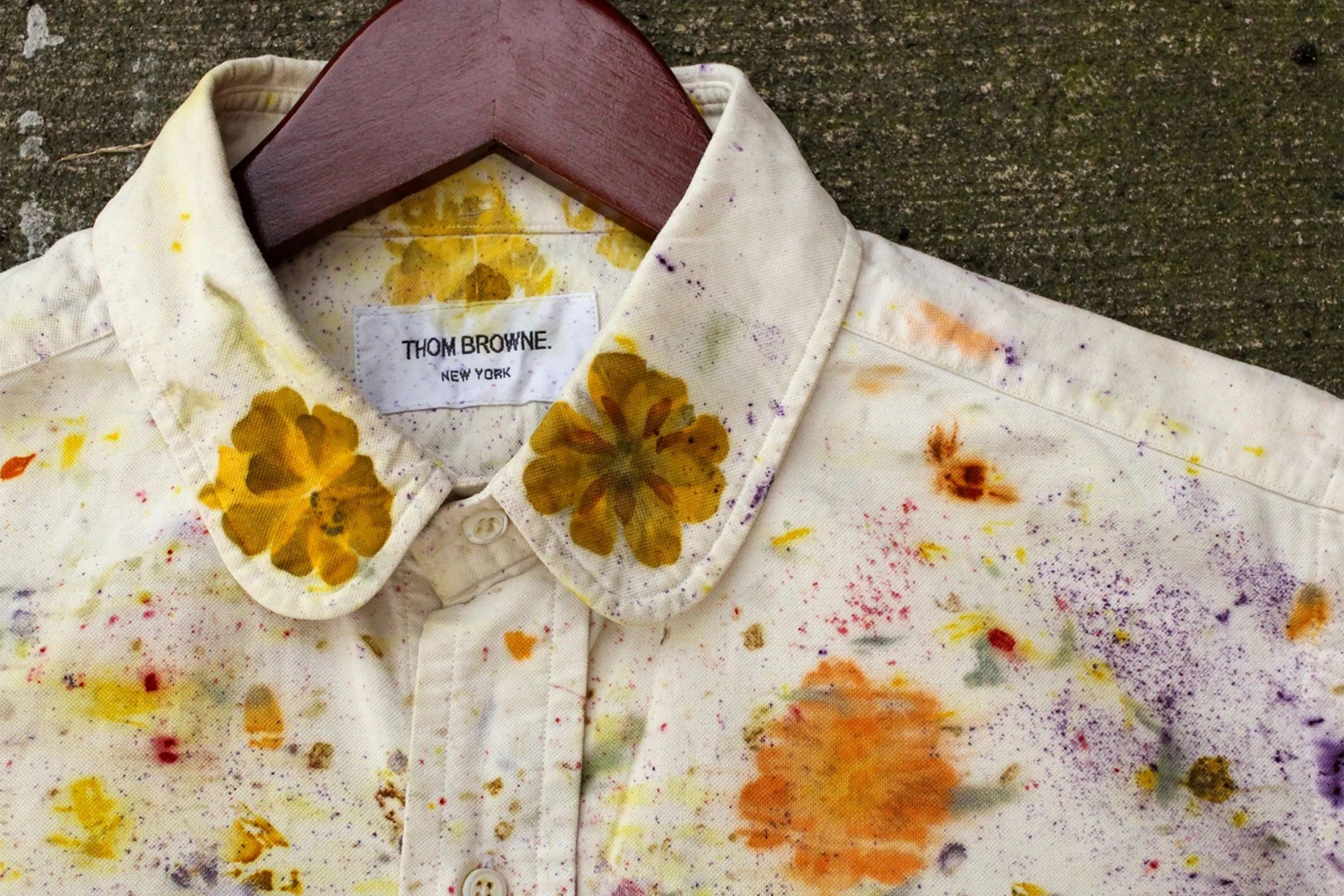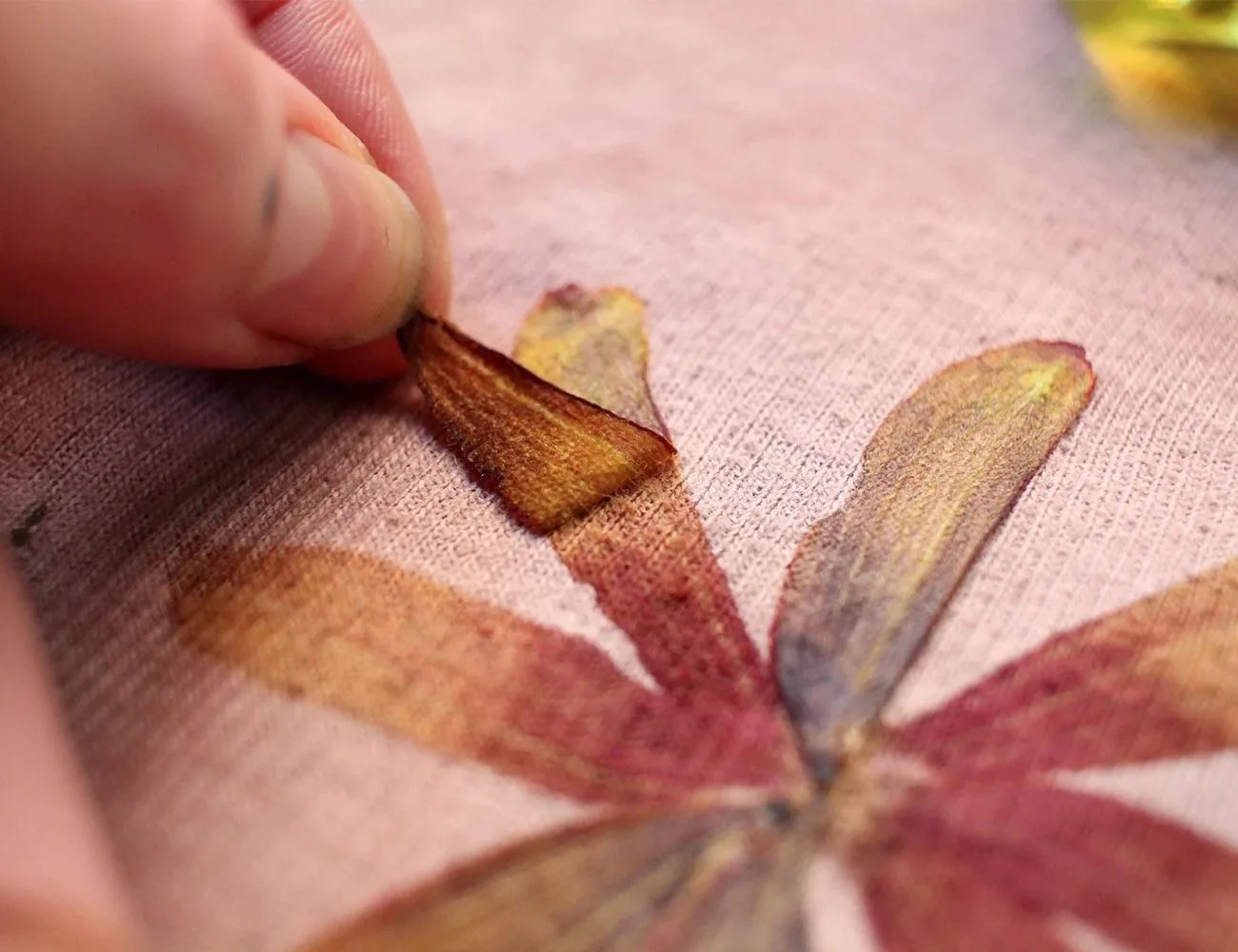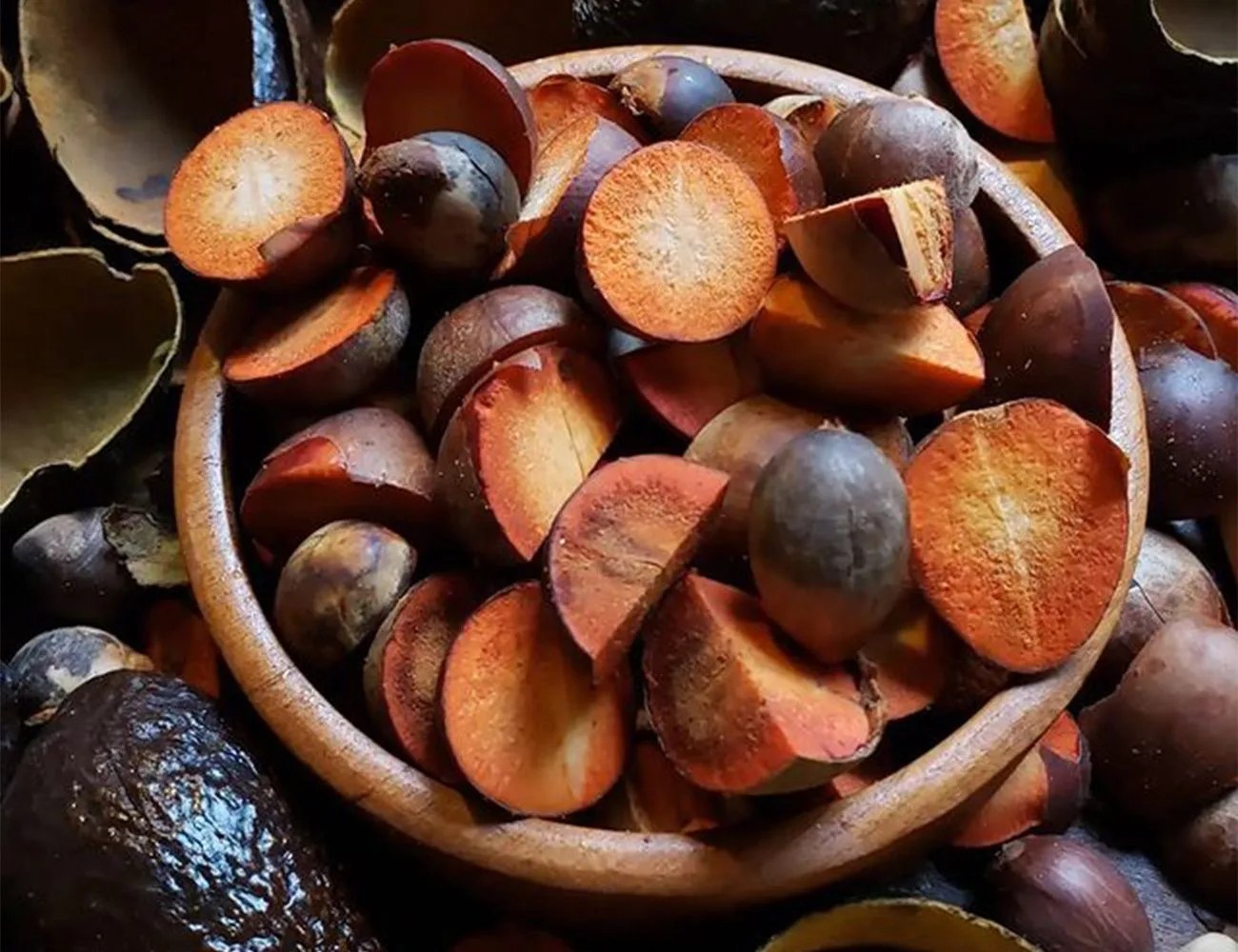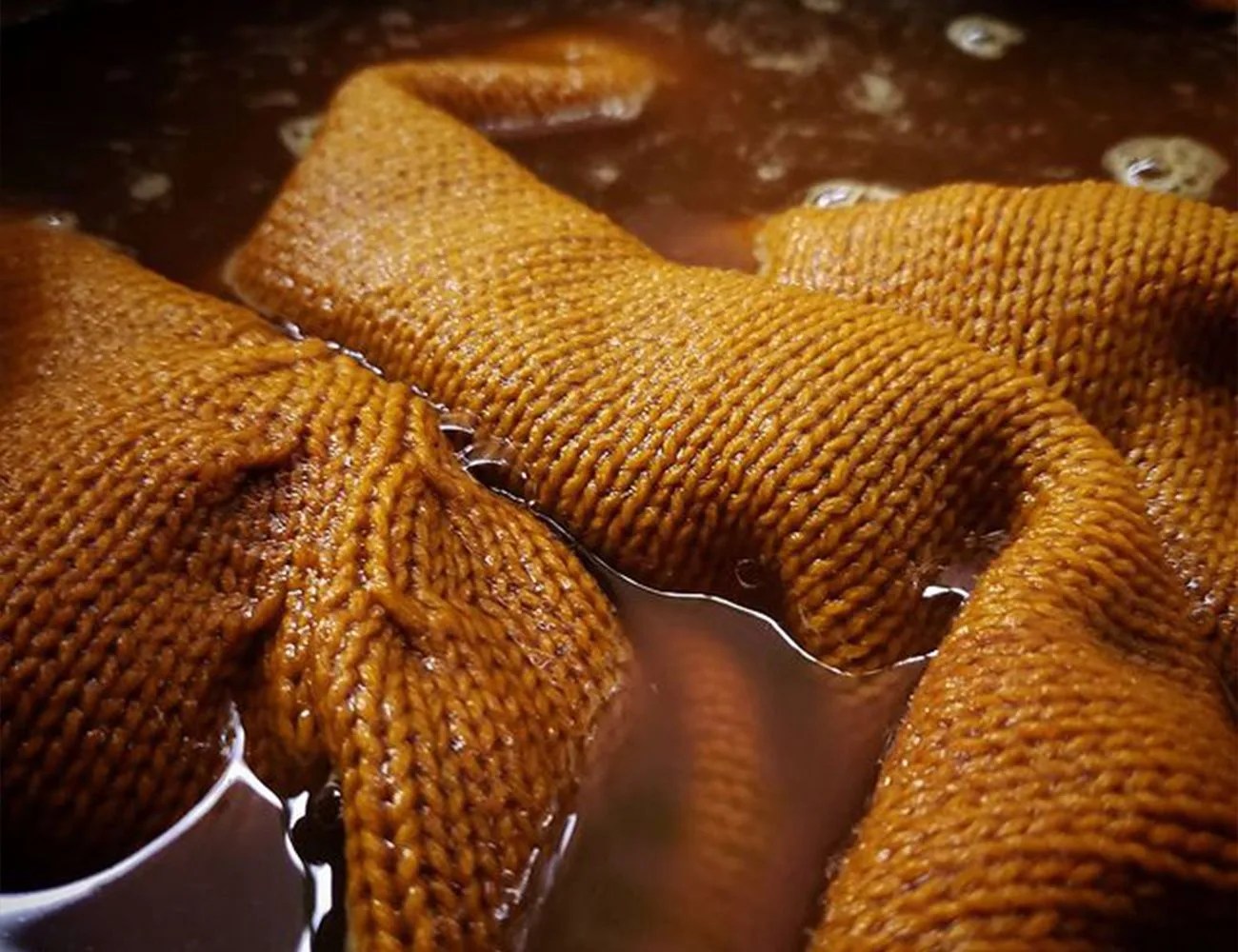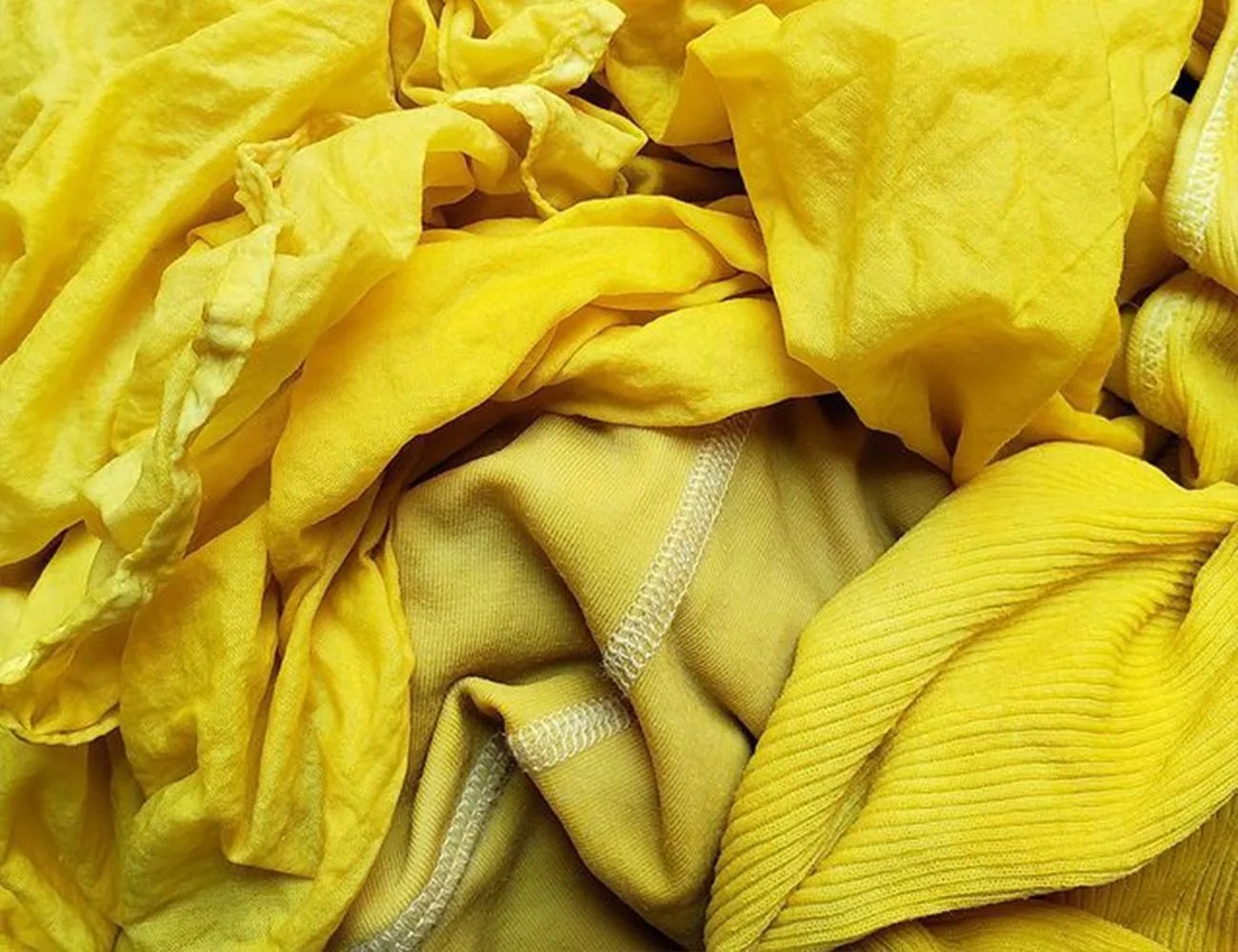Naturally dyed garments are increasingly commonplace for fledgling and established brands alike. Older Brother uses kelp and algae from the coasts of Ireland and Argentina to make a pastel green button-up. Wellen dyes their T-shirts with pomegranate skins. Lululemon makes basic tees in colors created by plant waste from the agricultural and herbal industries. All of these are interesting, and dedicated, attempts at weaning their brands, and thus their customers, off petroleum-based dyes.
According to The World Bank, 20-percent of the world’s water pollution problem can be traced back to the textiles industry, which cites over 8,000 different chemicals in its dyeing processes. Seeing bigger brands take stabs at switching from less eco-conscious dyes to ones derived from plants, food, insects or roots and woods is a step. Each release is further proof that natural dye processes work. But vloggers, bloggers, and social media personalities, each eager to show how natural dyes work, are downplaying not only how hard it is to make them but use them, too.
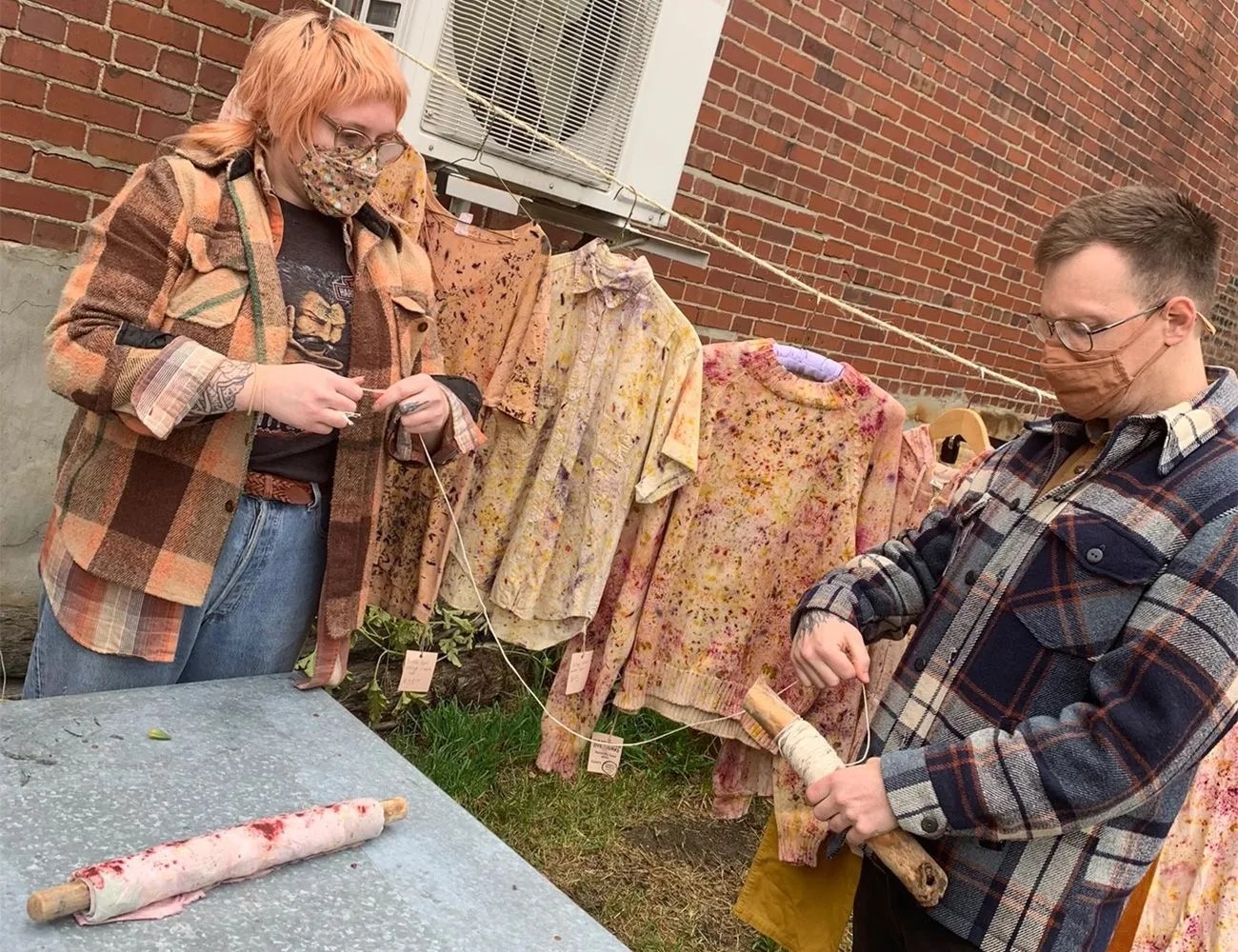 Waxflower Dyeworks
Waxflower DyeworksHannah Cornish Edelstein, a natural dyer, textile artist, and owner of Waxflower Dye Works, feels the art of natural dyeing faces ongoing misinformation issues. “There is a big problem in the natural dye world of folks being mislead into thinking they can easily make a permanent dye from their kitchen waste, and without proper fabric prep. Scouring and mordanting is essential,” she says. “Then, when their projects fail or fade very, very quickly, they assume that all natural dyes are like that — when they aren’t.”
Scouring: cleaning or preparing textiles with an abrasive tool or detergent
Colorfastness: how well a dye color holds up to repeated washing (wash-fastness) and exposure to natural light (lightfastness)
